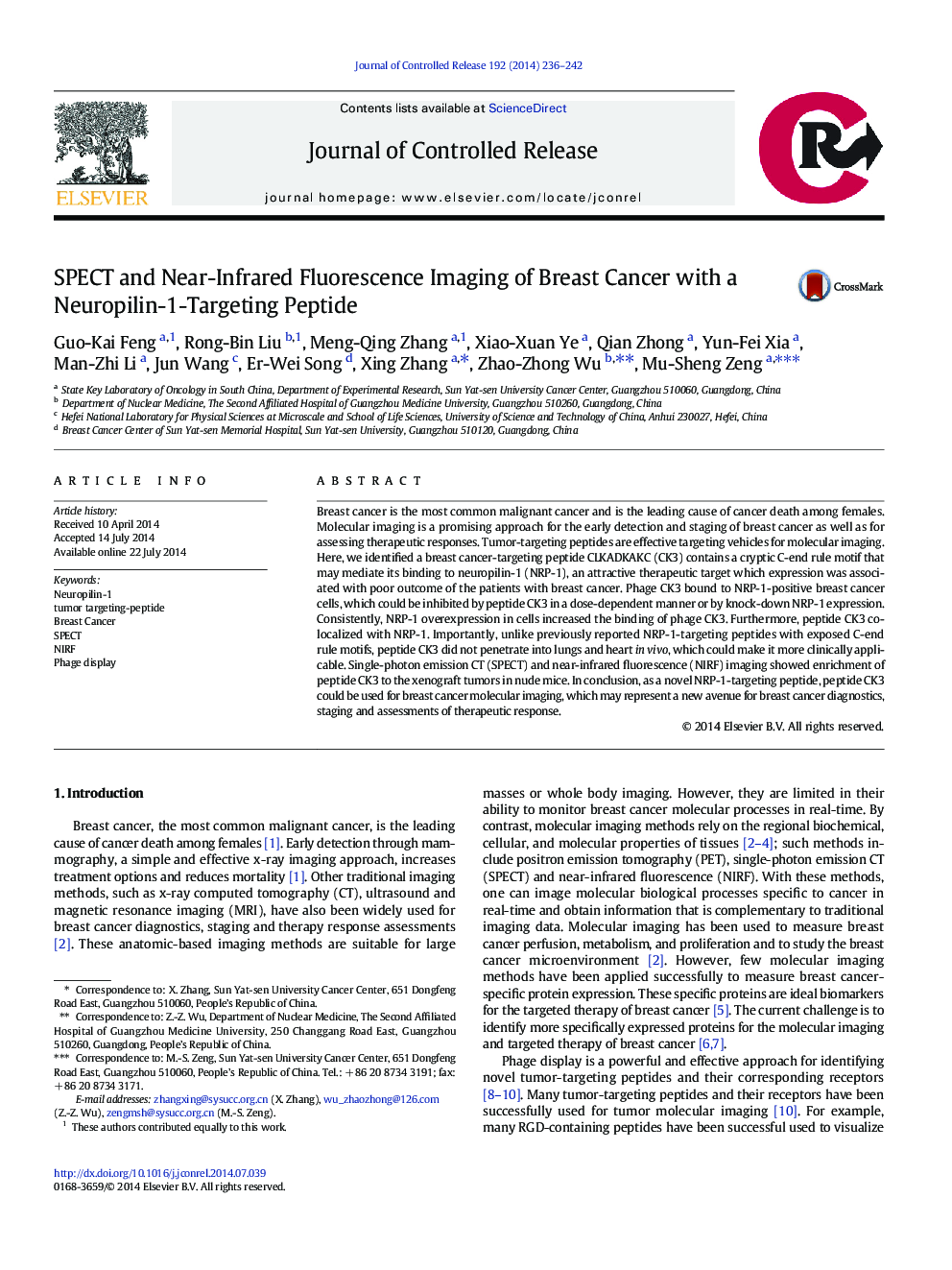| Article ID | Journal | Published Year | Pages | File Type |
|---|---|---|---|---|
| 1423929 | Journal of Controlled Release | 2014 | 7 Pages |
Breast cancer is the most common malignant cancer and is the leading cause of cancer death among females. Molecular imaging is a promising approach for the early detection and staging of breast cancer as well as for assessing therapeutic responses. Tumor-targeting peptides are effective targeting vehicles for molecular imaging. Here, we identified a breast cancer-targeting peptide CLKADKAKC (CK3) contains a cryptic C-end rule motif that may mediate its binding to neuropilin-1 (NRP-1), an attractive therapeutic target which expression was associated with poor outcome of the patients with breast cancer. Phage CK3 bound to NRP-1-positive breast cancer cells, which could be inhibited by peptide CK3 in a dose-dependent manner or by knock-down NRP-1 expression. Consistently, NRP-1 overexpression in cells increased the binding of phage CK3. Furthermore, peptide CK3 co-localized with NRP-1. Importantly, unlike previously reported NRP-1-targeting peptides with exposed C-end rule motifs, peptide CK3 did not penetrate into lungs and heart in vivo, which could make it more clinically applicable. Single-photon emission CT (SPECT) and near-infrared fluorescence (NIRF) imaging showed enrichment of peptide CK3 to the xenograft tumors in nude mice. In conclusion, as a novel NRP-1-targeting peptide, peptide CK3 could be used for breast cancer molecular imaging, which may represent a new avenue for breast cancer diagnostics, staging and assessments of therapeutic response.
Graphical abstractFigure optionsDownload full-size imageDownload high-quality image (98 K)Download as PowerPoint slide
